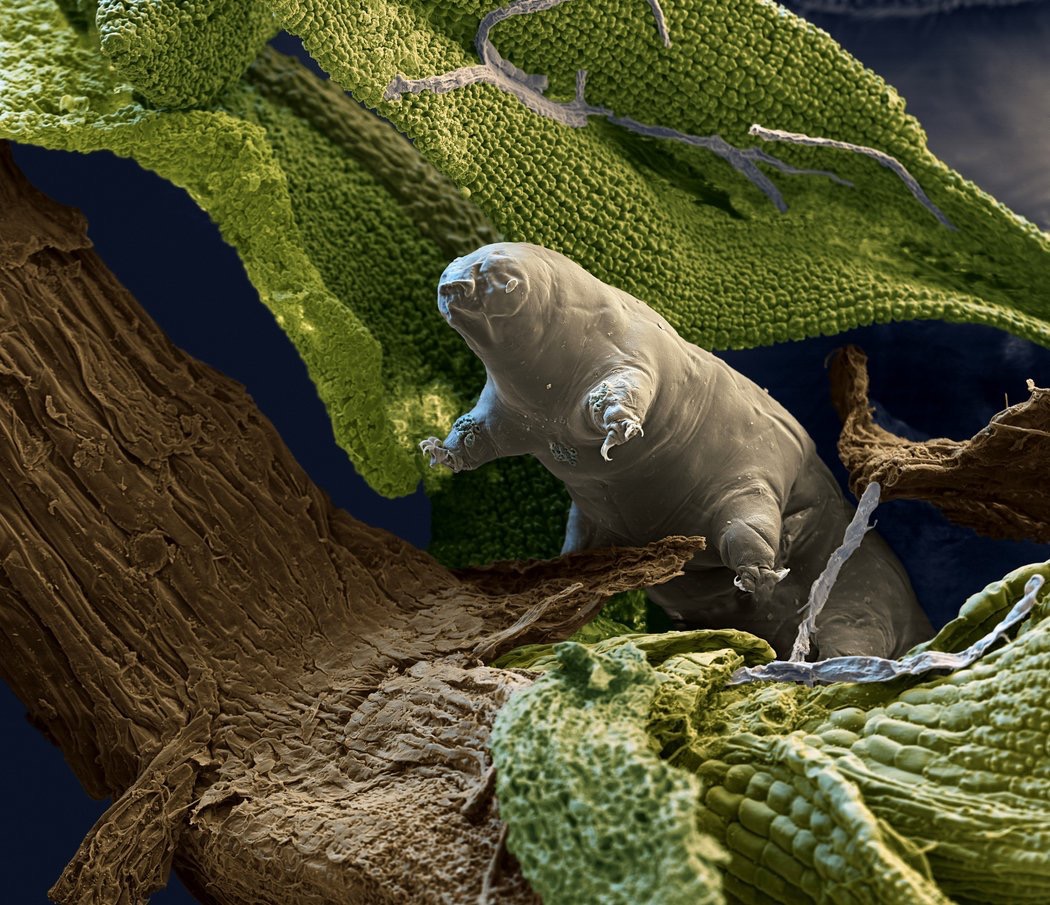
A color-enhanced scanning electron micrograph of a tardigrade found in moss samples from Croatia in its active state. Credit Eye of Science/Science Source
A Jolly Polyextremophile

Credit: Dailymail.co.uk
The tardigrade is not dismayed
By fifty below centigrade
He’s equally quite unafraid
Of scorching high temps in the shade
That tardigrade has got it made
He’s also called a water bear
Although this critter has no hair
And can live almost anywhere
Withstanding endless wear and tear
For toughness he has no compare

Water bear. Coloured scanning electron micrograph (SEM) of a water bear
A true polyextremophile
No need to eat for quite a while
A fasting, Spartan, spare lifestyle
Yet still his plumpness makes us smile
Slow-walking with his round profile
Tough Water Bear
The tardigrade will be tardy to its grave; it is one tough tiny critter. It may be the toughest little beastie in the whole world. This creature is a true “polyextremophile.” This means that it can tolerate two or more extreme conditions, like extreme temperature, pressure, dryness, lack of oxygen or radiation. I am definitely not a tardigrade. My hands get cold very easily and I’ve already had hypothermia once… and it wasn’t even below zero when I was on that camping trip.
Tardigrades are also called “water bears” or even “moss piglets” since they are commonly found in moist moss. However, these little guys do not just hang around lounging on velvety moss. They can survive extreme cold and extreme hot conditions. They are found high on the tops of frozen mountains, deep in the ice of Antarctica and even in the boiling water of hot springs. They need some moisture to survive, but they can tolerate long periods of extreme dryness as well. They simply slow their bodily functions way down and turn into a dehydrated version of themselves called a “tun.”
The tardigrade doesn’t weigh a ton, though. It is teeny-tiny. It is a microscopic creature that is found all over the world. You could probably find one near you if you have a good microscope. An adult is about 1.5 millimeters. A 10 – 60X power microscope should be strong enough to observe one of these critters.
Even though they usually only live about one year, water bears that have been dried out in their youth, (or curled into their “tun” state) have been brought back to life with a drop of water and seem perfectly fine after their hundred-year nap. They are one of the few creatures that can even survive the vacuum and solar radiation of outer space.
The name “tardigrade” or “Tardigradum” means “slow walker.” Coincidentally, after becoming interested in tardigrades, my husband began working at a company called “Slow Walkers.” I am eager to see what sorts of tough products they will produce. Tardigrade is a tough name to live up to.
Would you like to see a water bear in action? Want some tips on collecting water bears? Click on the following link: thekidshouldseethis.com
Have you ever seen a water bear? A water pig? A slow walker? Tell us about it in the comments below!